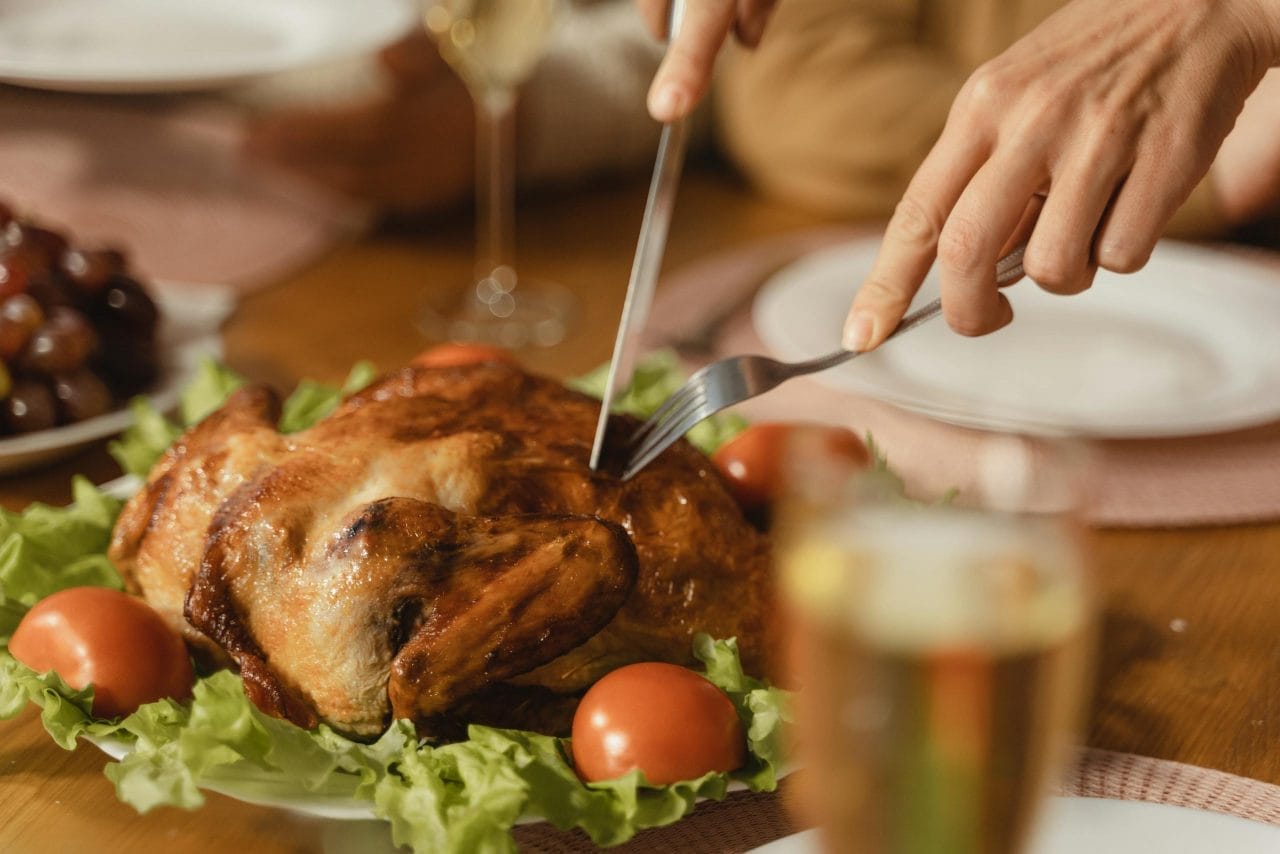I Made These FREE Vintage Recipe Tools JUST For You
This recipe was created with help from AI tools and carefully reviewed by a human. For more on how we use AI on this site, check out our Editorial Policy. Classic Fork earns a small commission from Amazon and other affiliate links at no extra cost to you, helping us keep our content free and honest.
Colonial Thanksgiving Menu: What Was Actually Served?
The Thanksgiving we know today—turkey, stuffing, mashed potatoes, and pumpkin pie—looks very different from the original feast in 1621.
That first harvest celebration between the Pilgrims and the Wampanoag wasn’t a copy of a modern holiday meal. It was a three-day gathering built around wild game, local crops, and whatever they could catch, grow, or gather.
What Would You Cook in Wartime?
Step back in time and discover what you could make with limited wartime rations
Wild Fowl Was Plentiful
Turkey was there—but it wasn’t the star.
The Pilgrims hunted ducks, geese, swans, wild turkeys, and even passenger pigeons. These birds were usually roasted over an open fire or stuffed with herbs and onions—no bread-heavy stuffing, no cranberry glaze.
Venison Took Center Stage
The Wampanoag brought five deer to the celebration.
That meant roasted venison, venison stews, and probably every edible part of the animal used. It was a high-protein, high-calorie treat that fed many and lasted days.
Seafood Was Everywhere
Living near the coast meant seafood was abundant.
Think cod, bass, eel, clams, lobsters, mussels—probably roasted, boiled, or made into broths. It was everyday food for them, not a special occasion delicacy.
Corn and Other Grains Were Staples
Corn wasn’t on the cob—it was ground into meal for porridge or bread.
They also had barley and wheat, which may have been used in early breads or fermented into beer. This was survival food, but it filled bellies.
Vegetables Were Seasonal and Savory
The table likely included squash, pumpkins, beans, peas, carrots, and onions.
Pumpkin pie? Not a chance. But savory pumpkin dishes or custards cooked in the gourd itself? Totally possible.
Fruits and Berries Made an Appearance
They didn’t have pies, but they had wild cranberries, gooseberries, grapes, and plums.
Cranberry sauce didn’t exist yet—sugar was scarce—but stewed or dried fruits could’ve been part of the spread.
Pies and Pastries Were Early Experiments
Meat pies and basic pastries were starting to appear thanks to English and Dutch influence.
They wouldn’t have the buttery crusts or sugary fillings we expect today, but the idea of a pie—especially meat-filled—was already on the table.
How It Was Different from Today
- No mashed potatoes or sweet potato dishes—those crops weren’t part of the region yet.
- Cranberry sauce didn’t exist, at least not sweetened.
- Stuffing was herbal, not bready.
- The feast lasted three days, not one. And leftovers were a given.
Cultural Influences at the Table
This wasn’t just an English meal—it was a blended celebration.
The Wampanoag brought knowledge, ingredients, and food. The Pilgrims brought their old traditions. Together, they created something unique: a shared harvest meal built from cooperation and necessity.
Final Thought
The first Thanksgiving wasn’t about pumpkin pie or gravy boats. It was about making do with what you had and sharing it generously.
The food was wild, seasonal, and deeply regional—and honestly, it probably tasted amazing.

